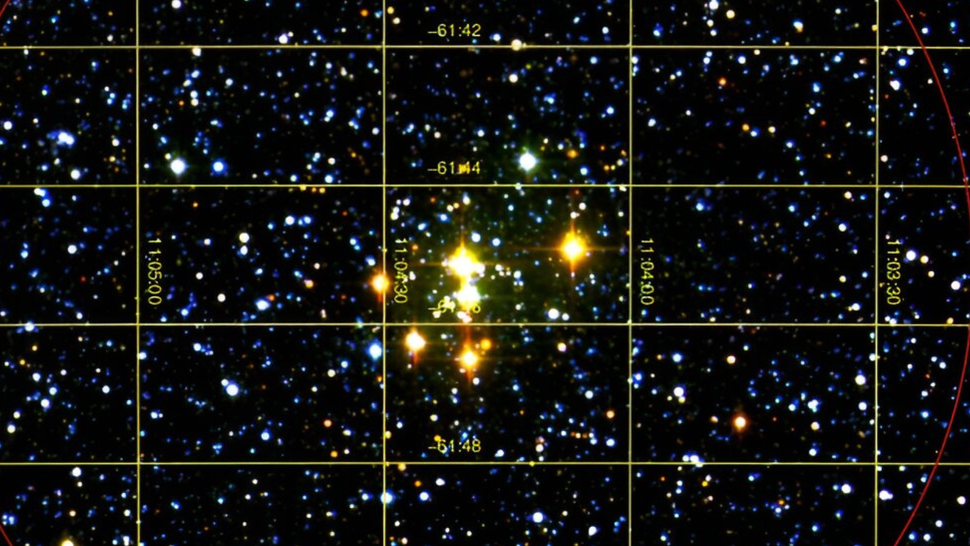Rare Milky Way star cluster is packed with red supergiants 1 million times brighter than the sun
By Robert Lea
published 11 minutes ago
"Clusters rich in red supergiants are very rare and tend to be very far away, but they play a crucial role in understanding key aspects in the evolution of massive stars."

Many bright orange yellow and red splotches centered at the heart of a yellow grid
Here be monsters! The supergiant rich cluster Barbá 2. (Image credit: Apellániz et al., 2024.)
In the past, map makers often placed monsters on their maps to mark unexplored regions and potentially dangerous regions. A famous example is the 'Theatrum Orbis Terrarum' map, created in 1570, which features sea serpents and other sea monsters.
Fast forward to today , and an unexplored Milky Way star cluster suggests that astronomers should adopt this tradition, too. The cluster is known as Barbá 2 and is found just 24,000 light-years or so away from Earth. An investigation using the star-surveying Gaia space telescope revealed that the Barbá 2 is packed with red supergiant stars, stars that can be hundreds of times wider than the sun and up to 1,000,000 times as luminous as the sun.
"There are many open clusters in the galaxy. However, not all open clusters have the same level of interest to astronomers," Ignacio Negueruela, a researcher at the Universidad de Alicante who was part of the team behind the discovery of supergiants in Barbá 2, told Space.com. "Clusters rich in red supergiants are very rare and tend to be very far away, but they play a crucial role in understanding key aspects in the evolution of massive stars."
The intimidating size and power of supergiants means these monster stars burn through their nuclear fuel much faster than stars like the sun. Whereas our star will exist in its main sequence lifetime for around 10 billion years, supergiants are estimated to last just a few million years.
More:
https://www.space.com/milky-way-supermassive-stars-open-cluster
